In an age where the specter of societal collapse looms larger by the day, bolstered by concerns of economic turmoil, government overreach, and geopolitical tension, the concept of establishing a self-sufficient retreat has transitioned from a fringe prepper fantasy to a prudent strategy for ensuring the security and sustainability of one’s family. Across America, patriots who share a righteous discontent with the direction of our nation are turning to off-grid living as a means to reclaim the values of liberty and self-reliance. These safe havens stand as bastions of independence, where free-thinking individuals can flourish away from society's decay and maintain the indispensable skills of survival and self-sufficiency.
TL;DR Summary:
This article serves as a comprehensive guide to creating a self-sufficient retreat for sustaining independence during societal unrest or collapse. It covers critical considerations such as selecting a secure location, setting up a sustainable water and food supply system, building with green materials, achieving energy independence, and implementing robust defensive measures. Emphasizing the importance of community building and preparedness, the piece provides practical steps towards establishing a retreat that upholds American values of freedom and self-reliance against any challenge.
This article seeks to guide you through the essential steps of forging a sanctuary that safeguards these American values, ensuring your resilience in the face of threats both natural and man-made. We embark on a journey that encompasses the pragmatic considerations of retreat selection, the mastery of food security strategies through organic farming practices and seed saving, the establishment of renewable energy sources, and the implementation of defensive fortifications to protect our homes. The commitment to off-the-grid sanitation, the adoption of green building materials, community resilience building, and navigation of homesteading laws are also integral pieces of the puzzle. As pioneers in this movement, this guide is your blueprint for creating a self-sufficient stronghold where you can weather any storm and emerge with your independence and values unscathed.
Assessing Your Needs and Goals
The journey to establishing a self-sufficient retreat begins with a clear assessment of your individual needs and the survival goals of your group or family. This is a time for introspection and pragmatism; you must consider the core values that define your pursuit of independence and how they will shape the retreat you create. Are you striving for complete financial independence, or is your primary focus to prepare for grid-down scenarios and potential WROL (Without Rule of Law) conditions? This initial stage is pivotal in defining the scope of your off-grid living aspirations - whether to embrace a full retreat lifestyle or to establish a bug-out location for emergency use. Each decision will dictate the resources required, from acquiring land to the skill sets you must cultivate, and prefaces the strategic planning that will transform your vision into a viable, secure haven.

As you delve into the realm of survivalist havens, a key consideration is the group or family size that the retreat must support. This will influence everything from the scale of your food security strategies - involving subsistence agriculture, hunting, and foraging - to the size and design of your self-sufficient energy grid. Envision your daily life within the retreat: the routines, the labor, and the leisure, and allow this to guide your practical needs assessment. Factor in the unique dietary, medical, and educational needs of your members, as these will play a crucial role in the creation of your safe haven. Assess, too, the psychological aspects; community resilience building starts with understanding that a group's well-being is integral to its survival. It's not enough to endure; you must thrive amid isolation and uncertainty by fostering a strong, interdependent community.
Lastly, evaluating your goals demands a keen eye on the future – anticipate and adapt to potential shifts in climate, regulations, and societal conditions. The engagement in adaptive survival strategies and the development of a pandemic-proof living environment are critical for resilience. Your retreat must be dynamic, capable of evolving with the landscape of risk and opportunity. This flexibility is the bedrock of survival, enabling you and your community to persist and flourish whatever challenges come, safeguarding the values of freedom and autonomy that are the heart of the American spirit.
Selecting the Right Location
The foundation of a well-prepared safe haven is its location—a choice that requires careful consideration of numerous criteria. The ideal spot combines strategic seclusion with accessibility, ensuring privacy and protection without compromising the ability to reach or interact with local barter networks and skill-sharing communities when necessary. It's a delicate balance to find a rural retreat location that is sufficiently isolated to prevent unwanted attention, yet not so remote that it becomes impractical for trade or mutual assistance. Within this search, keep in mind the importance of geographical and climate considerations. A retreat in the mountains may offer natural fortifications and cool climate benefits, while a plan set in the Plains could provide fertile land for subsistence agriculture. Each locale comes with its inherent advantages and threats, so choose one that aligns with your long-term survival strategy and risk tolerance.
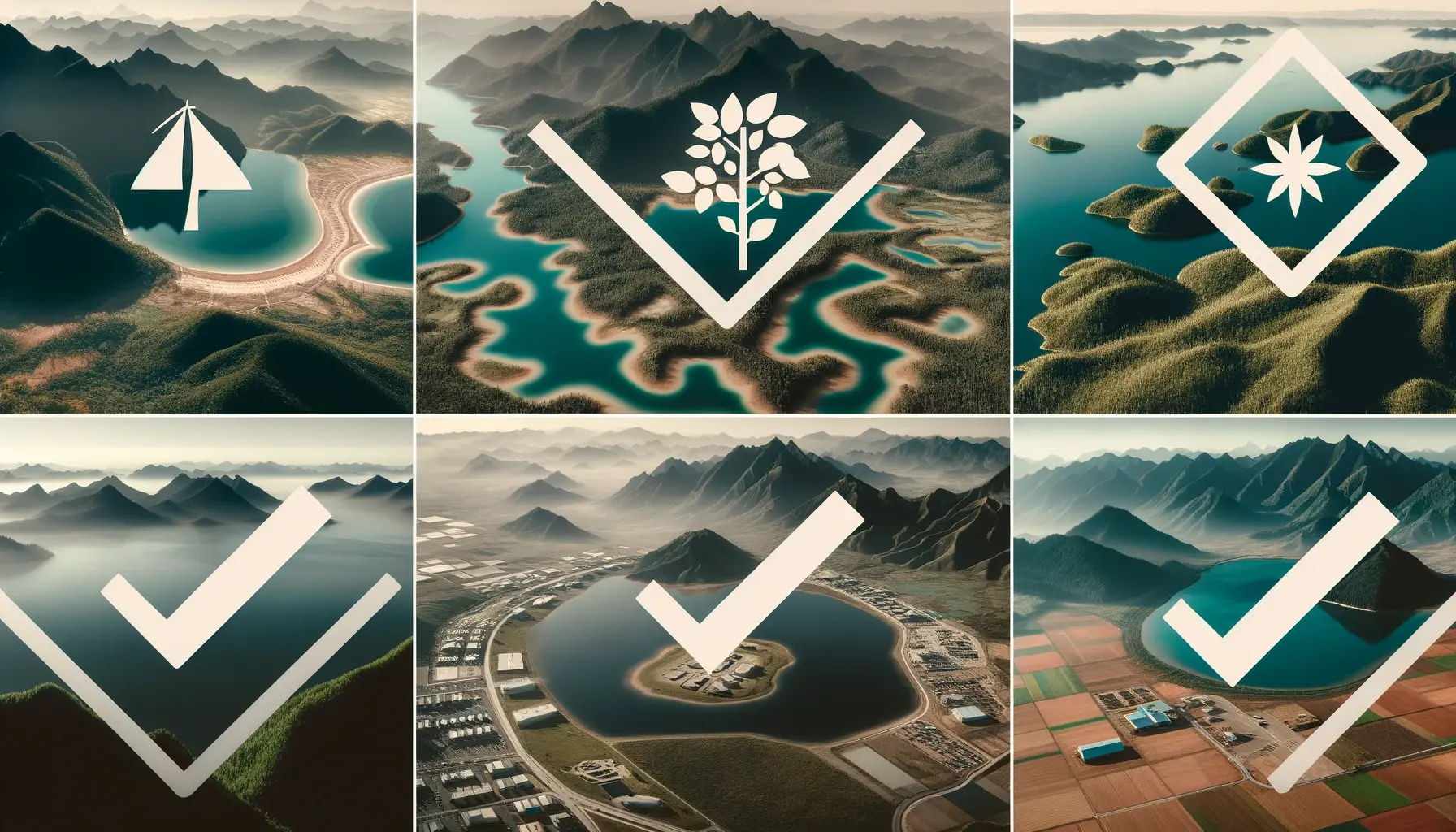
As not all land can offer the self-sufficient bliss we seek, certain land selection criteria become non-negotiable. The presence and availability of a clean water source is paramount, as is the viability of the soil for organic farming practices and ecosystem preservation. Investigate the likelihood of natural disasters in the area; a retreat safe from flooding, wildfires, or seismic activity is as crucial as one hidden from hostile eyes. Be aware that your chosen location dictates the defensive tactics and bug-in strategies your retreat may require. Ensure that your land provides not just protection and subsistence, but also the potential for renewable energy sources like solar power systems or small-scale hydroelectric setups, necessary for energy independence and self-reliance.
Yet, amidst the tactical and practical considerations, legal elements should not be overlooked. Investigate zoning laws, homesteading regulations, and property rights issues in detail. Prepper stockpiles and energy projects may face legal hurdles, and it's wise to anticipate these challenges beforehand. Additionally, consider the implications of land rights and local sovereignty support, understanding that your autonomous living knowledge must align with the regulations of the land, ensuring you can lawfully develop and maintain your retreat without unwelcome governmental interference.
Each element involved in selecting the right location for your retreat is a critical piece of your survival puzzle. From climate adaptability to legal compliance, your retreat's location encompasses all facets of self-sufficient living and determines the sustainability of your haven and the preservation of your American values in an ever-shifting landscape.
Securing a Water Source
One cannot overstate the importance of a reliable water source when building a self-sufficient retreat. It is the essence of survival—critical for drinking, cooking, hygiene, and agriculture. As such, identify a property endowed with natural water sources such as springs, wells, or streams, prefiguring the lifeblood of your homestead. Rainwater harvesting systems can supplement these natural sources, ensuring an ample supply even during times of drought. During the selection process of your sanctuary, prioritize land with access to water rights, or at the very least, the capability to establish a sustainable water collection and storage system.
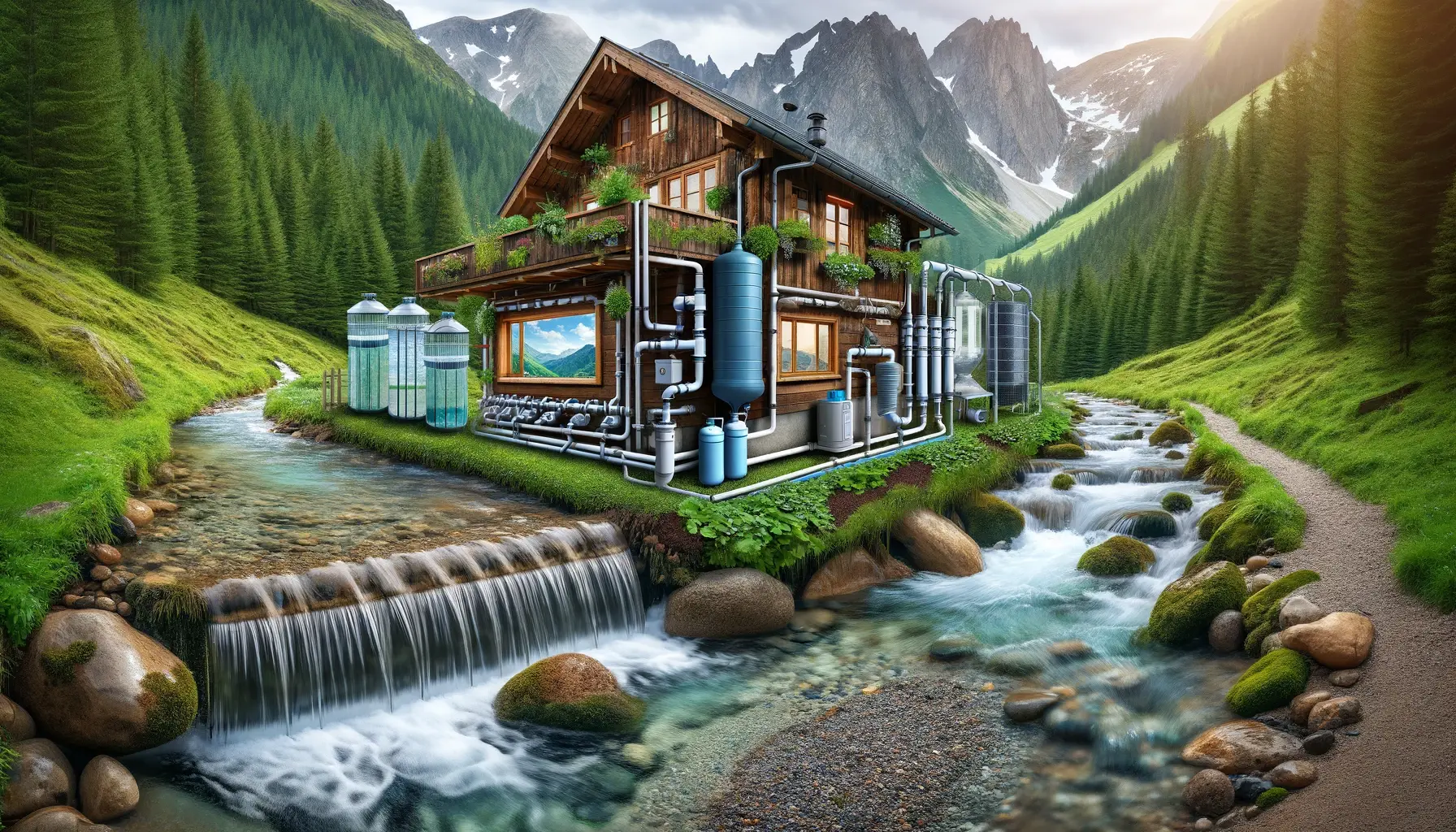
In today’s increasingly contaminated world, every drop of water must be considered for its purity. Invest in robust water purification systems that can eliminate potential pathogens and pollutants. It’s essential to implement multi-stage filtration, UV light treatment, and possibly distillation processes to secure water that meets safety standards for consumption and use. It is equally important to plan for redundant systems and emergency purification methods, such as boiling or chemical treatment, to ensure access to clean water even when primary systems fail.
Consideration of your water needs is a calculation that extends beyond mere survival; it sprouts into the fields of your green building materials garden and flows through the daily lives of your community members. Estimate your usage realistically and conservatively, factoring in additional water for irrigation in arid climates or for animals should your retreat include livestock. Invest in storage solutions like cisterns and water barrels, and build systems that promote conservation, such as greywater recycling and the use of drought-resistant plant species in your ecosystem preservation efforts. By establishing a well-thought-out water plan, your retreat can stand resilient in the dry spells and deluges alike, ensuring your self-reliance and sustainable living practices are not just a dream but a lived reality.
Establishing a Food Supply
A secure and sustainable food supply is the cornerstone of any self-sufficient retreat, reflecting the independence and resilience at its core. Begin by embracing organic farming practices that will rejuvenate the land and provide nutritious produce. The use of permaculture design principles can maximize yield while minimizing labor and environmental impact. Identify heirloom seed varieties that will thrive in your location's climate, and establish a system for seed saving and storage, ensuring a continuous supply of crops year after year. Strategize the layout of your garden beds, orchards, and greenhouses to create a diverse ecosystem that can withstand pests, diseases, and fluctuating weather patterns.

Beyond cultivation, supplementing your food resources through hunting, fishing, and foraging adds another layer of self-reliance. Understanding the local wildlife management regulations is crucial as you integrate these skills into your survival plan. Study and respect the natural balance of your surroundings, only taking what can be consumed or preserved effectively. For those who choose not to hunt, consider livestock that can graze on your land efficiently, providing invaluable resources from eggs to milk, without straining your retreat's environment.
Preservation of your bounty is as imperative as its cultivation. Delve into food preservation techniques such as canning, dehydrating, and fermenting to ensure a variety of foodstuffs through the lean months. This long-term food preservation also adds depth to your culinary options and stabilizes your nutrition intake. Invest in sustainable storage solutions like root cellars, and dedicate space for bulk goods that have extended shelf lives. Understand the importance of stockpile management and rotation, never allowing supplies to become outdated or spoiled.
Lastly, the adoption of modern homesteading essentials must harmonize with a commitment to living off the land responsibly. This is paramount in ensuring that your food supply can endure through unfavorable seasons and societal disruptions alike. Your retreat's food system should be a dynamic entity, ever-evolving and adapting to the land's offerings and the demands of its inhabitants, all while ensuring that your survivalist haven remains a beacon of autonomy and provision.
Designing and Building the Retreat
The blueprint of your self-sufficient retreat is both a reflection of your survivalist principles and a practical response to the demands of resilience living. Begin by crafting detailed plans for your structures, carefully considering the layout to minimize energy usage while maximizing security and efficiency. Utilize green building materials that offer durability and insulation, like reclaimed wood or adobe, which also contribute to a low environmental impact. Strategic placement of dwellings can take advantage of natural light and earth's insulation, while the incorporation of tactical rural hideouts can provide added safety in the face of potential threats.
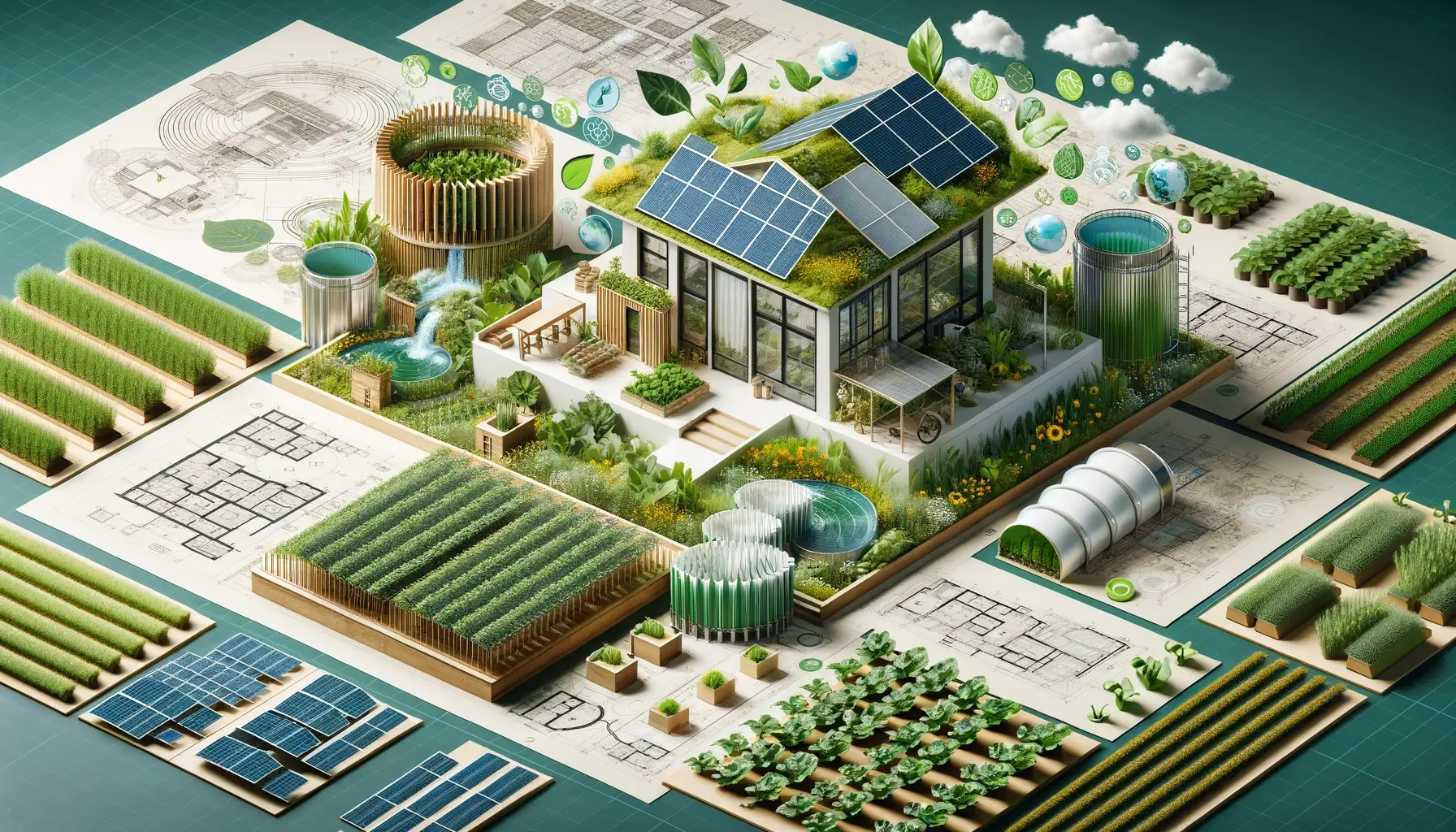
The sourcing of materials is a critical element. Whenever possible, choose local suppliers to reduce transportation costs and support your local economy. In certain cases, the land itself can provide the materials—timber, stone, and clay can often be sourced directly from the property, reinforcing the bond between your retreat and the environment. Alternative building techniques such as straw bale or cob construction not only contribute to the retreat’s energy independence but are also practical for those with the autonomous living knowledge necessary for such endeavors.
Consideration for insulation, heating, and cooling will significantly influence your retreat's capability to host a comfortable, year-round living environment. Passive solar heating, thermal mass storage, and cool roof systems can reduce the need for complex mechanical systems, making your homestead more resilient against energy scarcity. Designing with climate adaptability in mind ensures your retreat remains efficient regardless of the season, lowering your reliance on external resources.
Integral to the retreat's design is its infrastructure for health and sanitation. Off-grid waste management presents unique challenges and opportunities; composting toilets, greywater gardening, and biogas digesters are all systems that can turn waste into resources. Ensuring these systems are in place and properly managed is essential for the long-term sustainability and hygiene of your retreat.
Each element of your retreat's design must be carefully considered and executed with attention to detail to create a homestead that not only shelters but also nourishes and protects its inhabitants. The design is more than mere walls and roofs; it's a comprehensive strategy that encases your independence, security, and ability to thrive in an uncertain world, ensuring that every nail and beam supports the American values of diligence and self-governance.
Energy Independence
Achieving energy independence is an essential step towards true self-sufficiency, liberating your retreat from the vulnerabilities of public utilities and uncertain grids. Begin by exploring renewable energy options that are feasible for your location. If you're blessed with abundant sunshine, solar power systems may be your mainstay, harnessing the sun’s rays with photovoltaic panels and possibly solar thermal collectors for hot water needs. Wind turbines can complement this setup in areas with consistent wind patterns, and for those lucky enough to have flowing water on their property, small-scale hydroelectric generators can provide a steady stream of power.
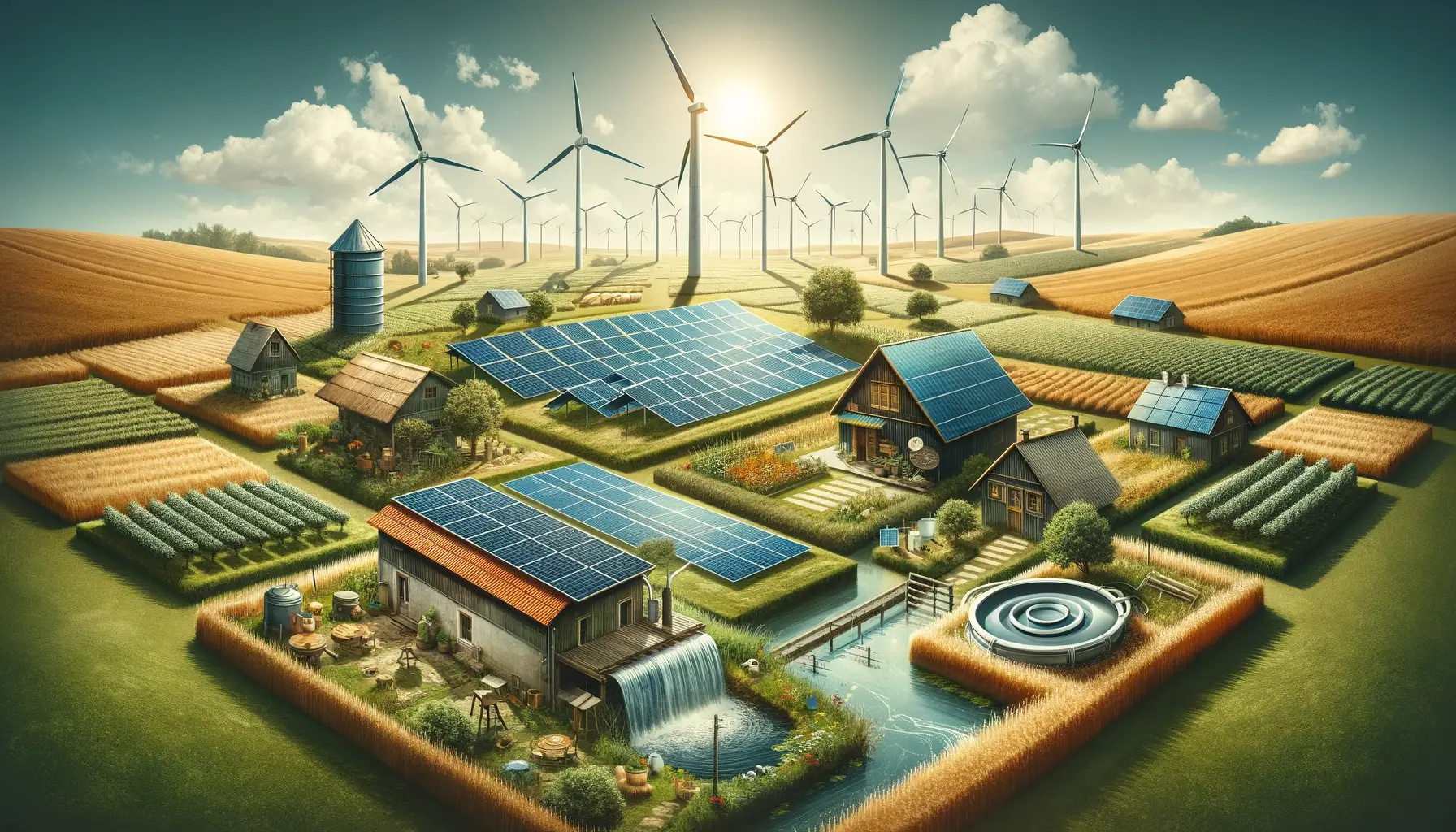
The next challenge is storing the harnessed energy to ensure a continuous supply, even when the elements aren't cooperating. Batteries capable of deep-cycling are a requirement for off-grid systems, holding the charge from your renewable sources until it's needed. Recent advancements in battery technology have made storage more efficient and affordable. However, it's crucial to have backup systems in place: traditional generators can fill in during prolonged periods of inadequate renewable energy collection, although you should strive for sustainable alternatives like biofuel options if possible.
In your pursuit of energy independence, conservation should become a daily mantra. Audit your energy usage and invest in energy-efficient appliances that can work on direct current (DC) to minimize power loss in conversion. LED lighting, energy star rated devices, and well-insulated buildings help stretch your energy reserves further. Simple habits, such as utilizing natural light during the day and reducing phantom loads by unplugging electronics when not in use, will significantly lower your power demands.
Finally, consider engaging in do-it-yourself energy projects. These can range from building solar dehydrators and ovens to setting up vertical wind turbines. Such projects not only cut costs but also amplify your independence, embedding the knowledge and skills within your community. Living proof that with the right mindset and skills, even the power your retreat uses can reflect the irrepressible American spirit of innovation and self-reliance.
Defensive Strategies
In times of societal instability, ensuring the security of your retreat becomes paramount. Start with a realistic assessment of potential threats, which might range from natural disasters to human trespassers. From the outset, design your haven with defense in mind, incorporating natural and man-made fortifications that provide concealment and deterrence. Strategic landscaping can both camouflage dwellings and create barriers, while the selection of a location with natural obstacles, such as water features or rough terrain, can add an additional layer of security.
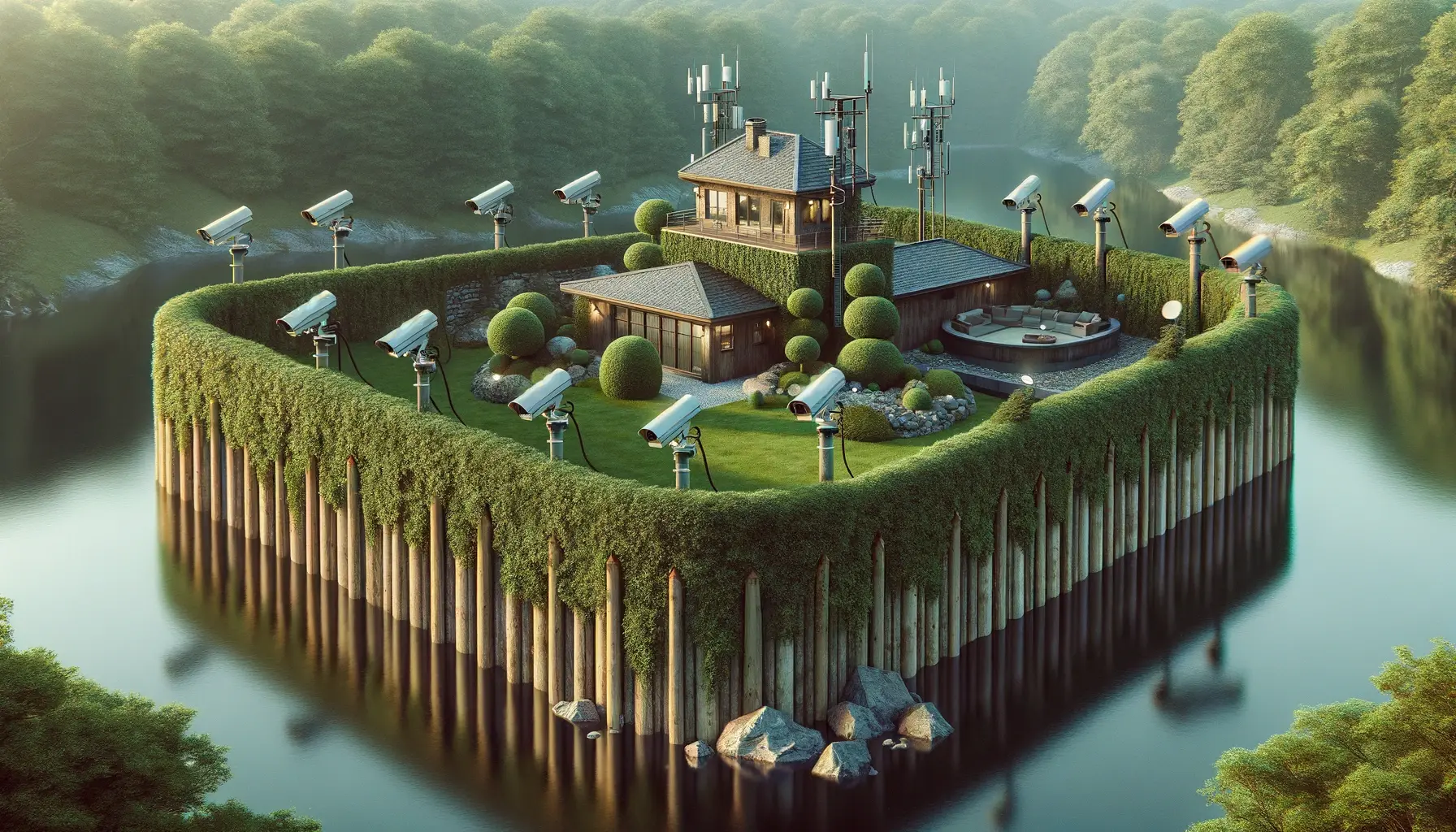
The perimeter of your sanctuary is your first line of defense; it's important to have a robust system in place for surveillance. This could include motion detectors, security cameras, and remote sensors that blend in with the environment. These systems can act as a deterrent to would-be intruders and provide early warning of any unauthorized entry. Remember, however, that the technology you rely on for security should not become a vulnerability; ensure that it's part of your self-sufficient energy grid and can operate independently of external power sources.
In addition to electronic surveillance, develop contingency plans that account for various scenarios. Designate safe rooms within your structures, stock them with essential supplies, and reinforce them against break-ins and natural disasters. Plan multiple escape routes from all locations of your retreat, and ensure each member of your community knows these plans inside and out. Hold regular drills to practice these escape routes and other emergency responses, so when faced with an unexpected situation, fear and confusion won't take hold.
Defensive strategies are not solely about reacting to threats but also about preventing them. Fostering good relationships with neighbors and local authorities can often be your best defense, as it builds a network of allies who can offer support when needed. Through skill-sharing workshops and barter systems, you can strengthen these ties and create a sense of mutual reliance, which is critical for community resilience and can act as a natural deterrent to threats. With a well-thought-out approach to defense, your retreat can be a bastion of safety, allowing you to maintain the independent, free lifestyle that is your American birthright.
Community Building and Self-Reliance
The very essence of a sustainable retreat is not just in its physical structures and resources, but in the strength and resilience of its community. It's imperative to cultivate a culture of self-reliance where each member contributes their unique skills and knowledge. This shared pool of resources strengthens the group, making it capable of overcoming whatever challenges may arise. Invest time in identifying and developing these skills through workshops and continuous education—be it medical training, mechanical repairs, or traditional crafting—so that self-sufficiency becomes a communal endeavor, not just an individual pursuit.

Building your community extends beyond the borders of your retreat. Establishing ties with neighboring homesteads and local networks can usher in a symbiotic relationship, fueling a broader support system. Engage with local barter networks to exchange surplus goods and services, reinforcing economic independence and mutual aid. Not only does this foster goodwill, but it also creates a safety net that could prove invaluable in times of need. Reliance on local networks minimizes the impact of global disruptions, solidifying your haven against the uncertainties of mass supply chains and centralized control.
Self-reliance also entails a preparedness mindset instilled in every community member. Training in survival skills, self-defense, and disaster response should be part of regular community activities, ensuring that from the youngest to the oldest, everyone is equipped to contribute positively in any scenario. Keep the spirit of independence alive through community events and shared traditions that reinforce the values of collaboration, perseverance, and American autonomy.
Building a community that is self-reliant doesn't happen overnight; it requires dedication, communication, and the collective will to survive and thrive independent of a society that may not always have your best interests at heart. By fostering skill diversity, establishing local networks, and promoting a culture of preparedness, your retreat will not just be a sanctuary in times of turmoil but a living example of the enduring American spirit of freedom and cooperation.
Sustainable Living Practices
The creation of your retreat must be a model of sustainable living, embodying practices that ensure the longevity and health of both your sanctuary and the natural environment. This commitment means embracing renewable resources, recycling, and ecological management as core tenets. Start by integrating systems that maximize the reuse and recycling of materials—these may include composting organic waste, repurposing building materials, and setting up rainwater catchments. An ecological approach to living not only conserves resources but also minimizes the retreat's impact on the surrounding environment. Each act of recycling and reuse is a step towards reducing dependency on external systems, a crucial aspect of surviving societal collapse.
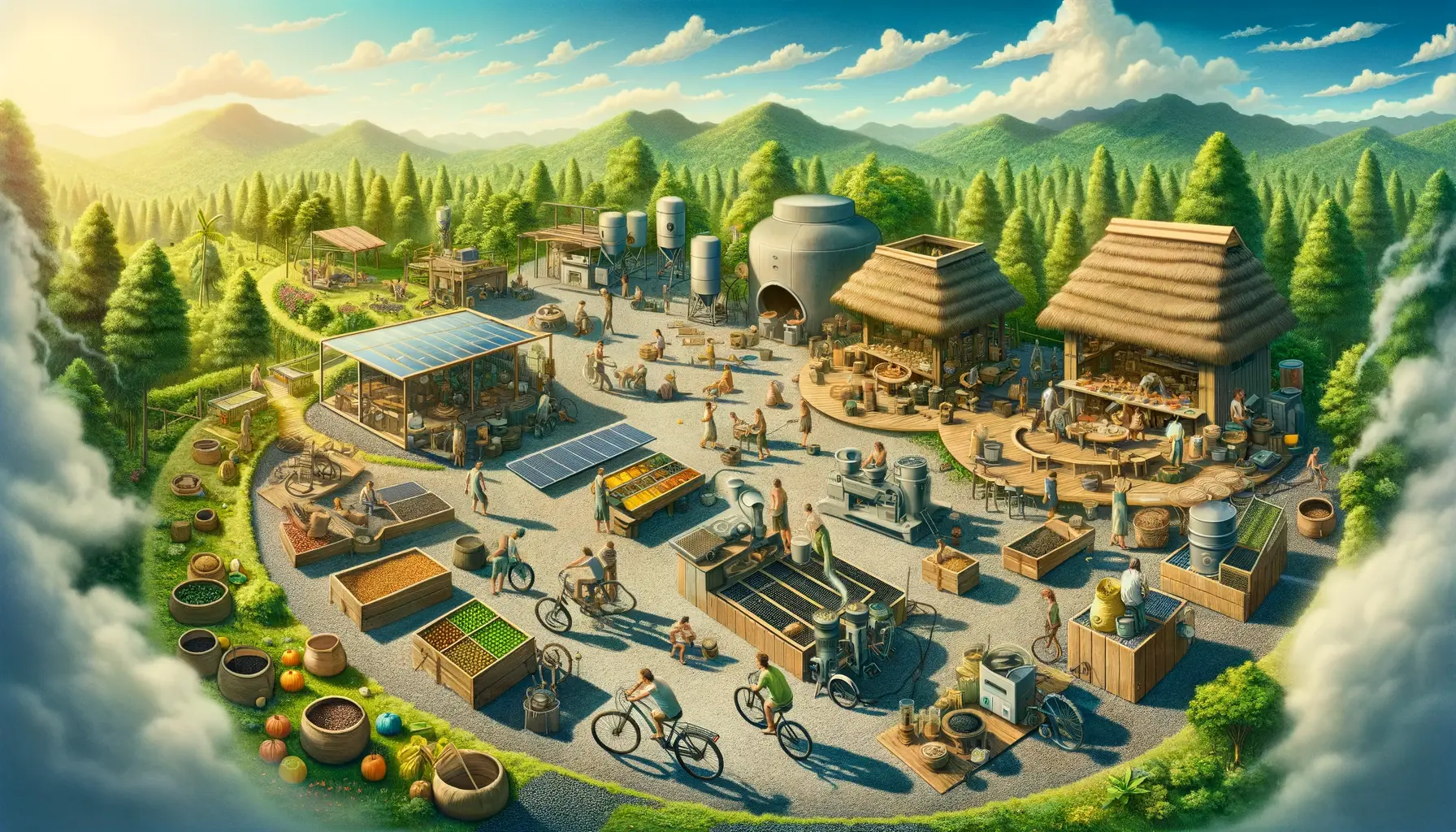
The balance between technological advancement and traditional survival skills is critical to maintaining a sustainable retreat. While modern energy-efficient appliances can aid your conservation efforts, skills like woodworking, blacksmithing, and manual agriculture connect your community to the timeless crafts that don't rely on electricity or fossil fuels. These activities not only enhance self-reliance but also serve to educate younger generations in the art of living harmoniously with nature. Such skills are invaluable, especially as they foster a deeper appreciation for the work involved in sustaining a living space and can be a source of well-being and empowerment for all community members.
Lastly, it is important to remain conscious of the retreat's environmental footprint, practicing good stewardship of the land. This includes managing forests sustainably, protecting wildlife habitats, and using natural fertilizers to ensure your land remains fertile and productive for generations to come. Encouraging biodiversity through polyculture and native plant cultivation aids in the preservation of local ecosystems, making your retreat a verdant oasis rather than a drain on the region's resources.
Sustainable living is a philosophy that encompasses every facet of retreat life, from the energy you generate to the food you grow and the materials you use. It requires an unwavering commitment to practices that protect and enhance the natural world, ensuring that as you distance yourself from society's decline, you are simultaneously building a future that is environmentally sound and enduringly self-sufficient. It is a living testament to the enduring American values of stewardship and respect for the land.
Acquiring and Storing Supplies
To establish an independent haven capable of withstanding the unforeseen, a well-planned and managed stockpile of essential supplies is a must. Begin by meticulously listing the essential tools and equipment needed for off-grid living—ranging from basic hand tools and farming implements to more sophisticated items such as water filters and renewable energy system components. Prioritize durable and multi-purpose tools that can withstand the rigors of retreat life, thus minimizing the need for frequent replacements and reducing reliance on external manufacturing.

The methodical storage of supplies is equally critical. Long-term storage strategies encompass not only the safekeeping of non-perishable food items but also the protection of seeds, medical supplies, and replacement parts for vital machinery. Contemplate innovative storage solutions like temperature-controlled root cellars for food items or airtight containers with moisture-absorbing desiccants to safeguard sensitive components from degradation. Establish a secure and controlled environment to ensure the longevity and effectiveness of your stockpile, bearing in mind that adequate rotation is indispensable to prevent spoilage and waste.
Lastly, the management and rotation of your stockpile must be handled with precision and foresight. Regularly review inventory levels, assess the condition of stored items, and keep a detailed log of when supplies were acquired and when they should be used by or replaced. This attentiveness guarantees that, in times of need, each item will function as intended and that no part of your cache will be found wanting. It is part and parcel of upholding the preparedness that typifies the American survivalist—a person prepared for any hardship, whose foresight ensures the longevity and self-reliance of their retreat in an unpredictable world.
Legal and Ethical Considerations
Navigating the legal framework and ethical considerations that come with establishing a self-sufficient retreat is not an endeavor to take lightly. As a prudent survivalist aware of the potential for governmental overreach, it's imperative to remain compliant with local, state, and federal regulations governing land use, building codes, and environmental protection. This compliance is crucial not just to avoid legal repercussions but to ensure the longevity of your sanctuary. Before building structures or modifying landscapes, research and adhere to the necessary legal requirements, acquiring permits and inspections as required by homesteading laws. Doing so demonstrates a respect for the rule of law and establishes your retreat as a legitimate and recognized homestead.
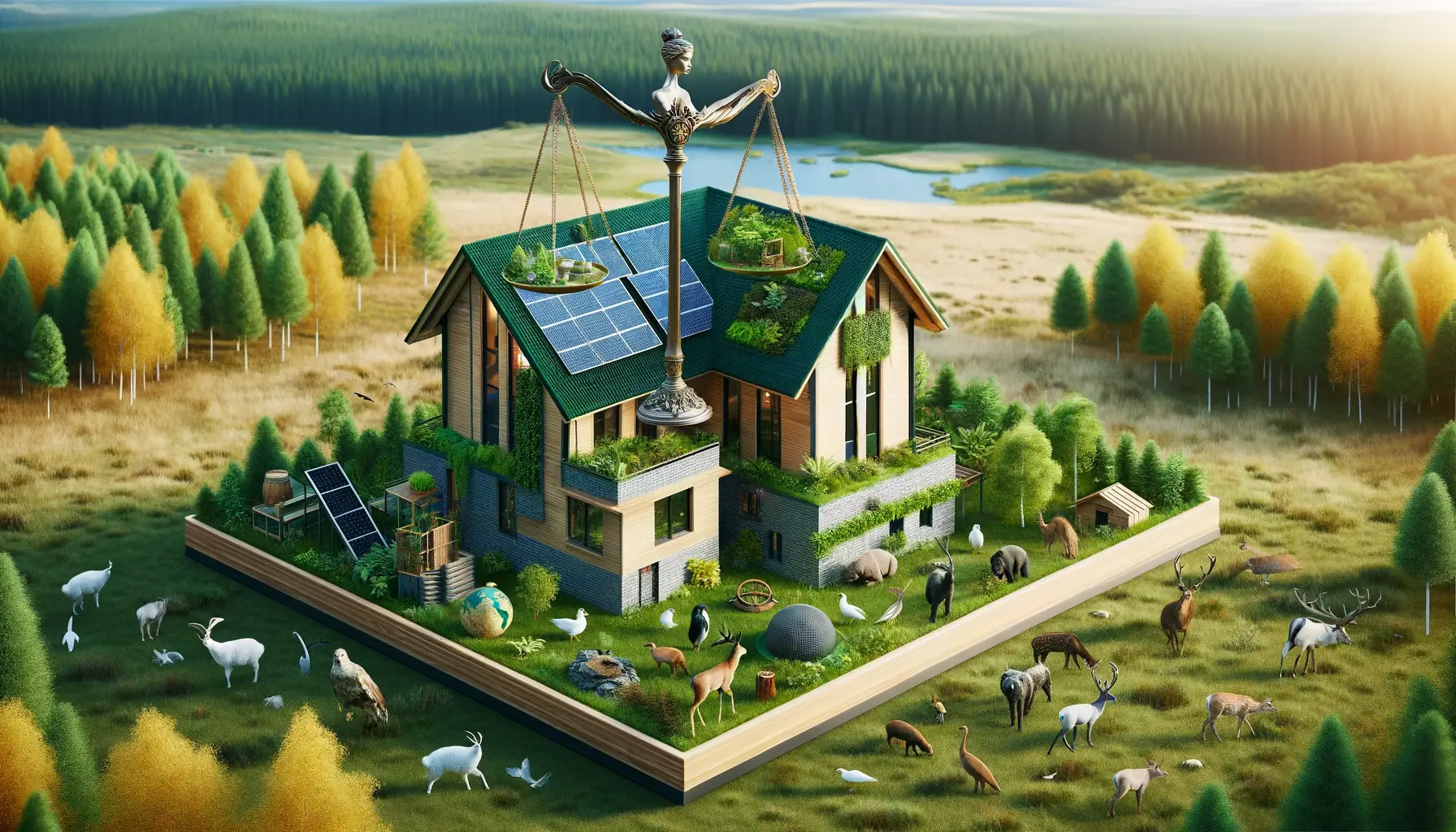
The ethical use of land and resources goes hand in hand with legal compliance. Ethical stewardship means harvesting and utilizing the land’s resources in a way that sustains and regenerates ecosystems rather than depleting them. It's about balancing your needs with the health of the environment, ensuring that future generations inherit a piece of America as rich and bountiful as the one you received. This involves prudent wildlife management, eco-friendly waste disposal, and the responsible consumption of natural resources.
Moreover, engaging with the wider community in a responsible and ethical manner is pivotal. As a self-sufficient retreat, it could be easy to fall into an isolationist mindset. However, being part of the broader tapestry of society means offering assistance and cooperation where possible, sharing knowledge and resources, and fostering good relationships with neighbors and local authorities. By addressing these legal and ethical considerations, you're not just building a fortress against societal collapse but a beacon of responsible autonomy that upholds the deepest values of the American spirit: freedom, stewardship, and communal respect.
Preparing for the Unexpected
The self-sufficient retreat is a bulwark against uncertainties, but its very foundation must be built on preparedness for unexpected events. Emergency planning begins with wide-ranging consideration of potential crises—from natural disasters like wildfires and floods to societal disruptions such as economic collapse or pandemics. Develop comprehensive response plans that specify roles, resources, and procedures to ensure swift and coordinated action when facing unforeseen adversities. These plans should detail emergency medical care, food and water rationing, communication strategies, and methods for ensuring the safety and security of all community members.
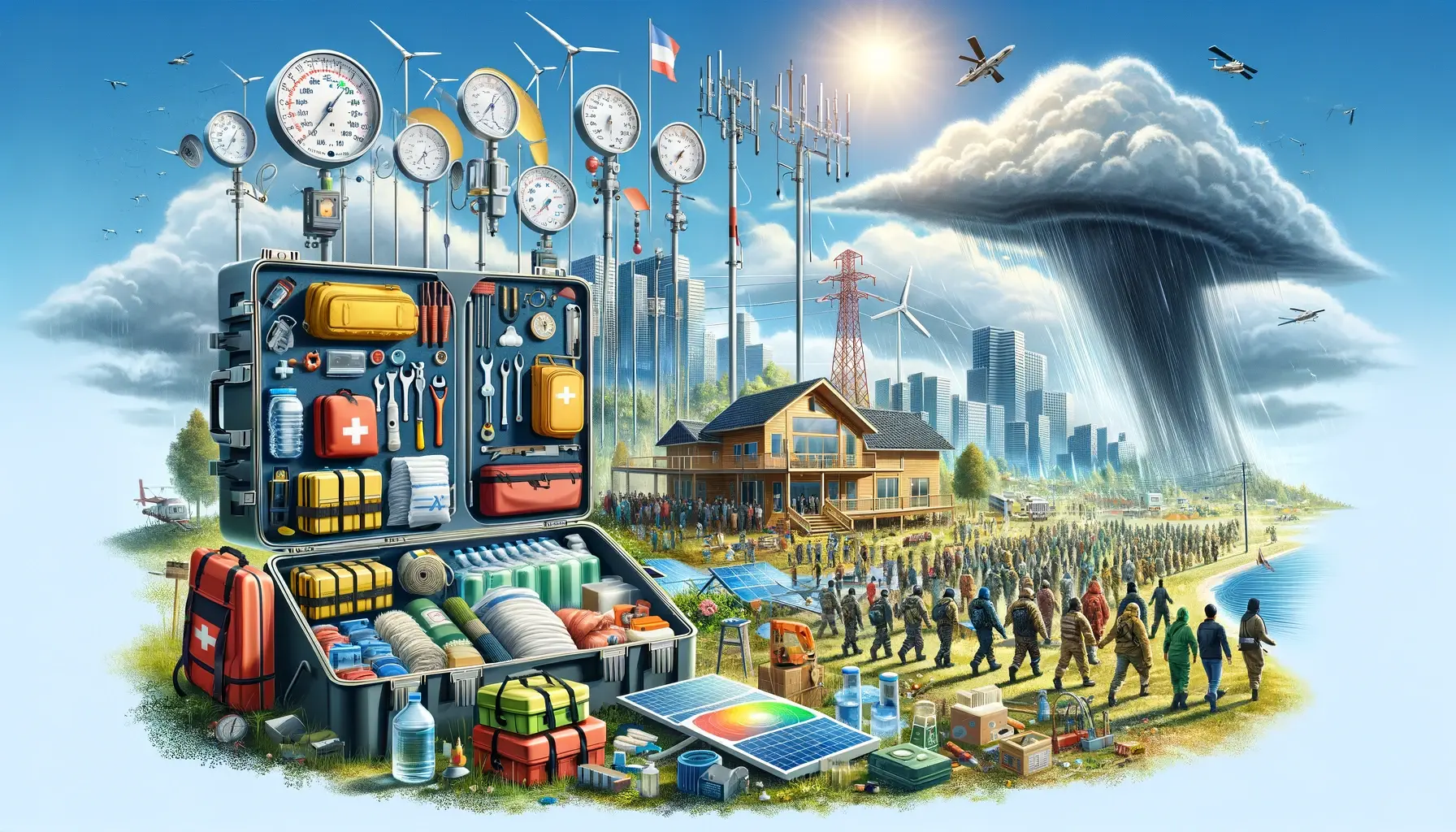
Staying informed and aware of the external environment is paramount. Keep abreast of global and local news, weather forecasts, and governmental alerts to anticipate challenges before they arrive at your doorstep. Modern technology, combined with traditional methods like shortwave radio, can ensure you remain connected to information channels even when mainstream systems fail. This proactive awareness allows for precious time to enact contingency strategies and adapt to changing conditions, maintaining your retreat's ability to navigate through crises.
Flexibility and adaptability are indeed virtues to cultivate within your community. When disruptions occur, the ability to shift strategies, ration resources, and even relocate if necessary can mean the difference between thriving and merely surviving. Include flexibility in your architectural designs, energy systems, and food production plans to ensure they can quickly adjust to new circumstances. Likewise, maintain a mindset eager to adopt new methods or abandon those that have become obsolete. Such adaptability keeps your community at the forefront of self-sufficient living, allowing it to evolve with the tides of change rather than be swept away by them.
In conclusion, preparing for the unexpected is not about living in fear but about embracing a mindset of resilience. Building your retreat with a focus on mitigation plans for potential disasters, whether natural or man-made, equips you with the confidence to face an uncertain future. By fostering a culture that values information, preparedness, and the capacity to adapt, your retreat will be a stronghold of survival, upholding the American ideals of perseverance and unyielding determination in the face of adversity.
Conclusion
In conclusion, the process of building a self-sufficient retreat away from society's collapse is an embodiment of American patriotism and the survivalist ethos. It is a testament to our commitment to freedom, self-reliance, and the preservation of our values in the face of growing instability. Throughout this guide, we've outlined the meticulous planning and consideration required to establish a stronghold of independence—from selecting the right location and securing essential resources to fostering a resilient community and preparing for the unexpected. Every step along the way reflects a dedication to autonomy and a wariness of dependency on failing systems.
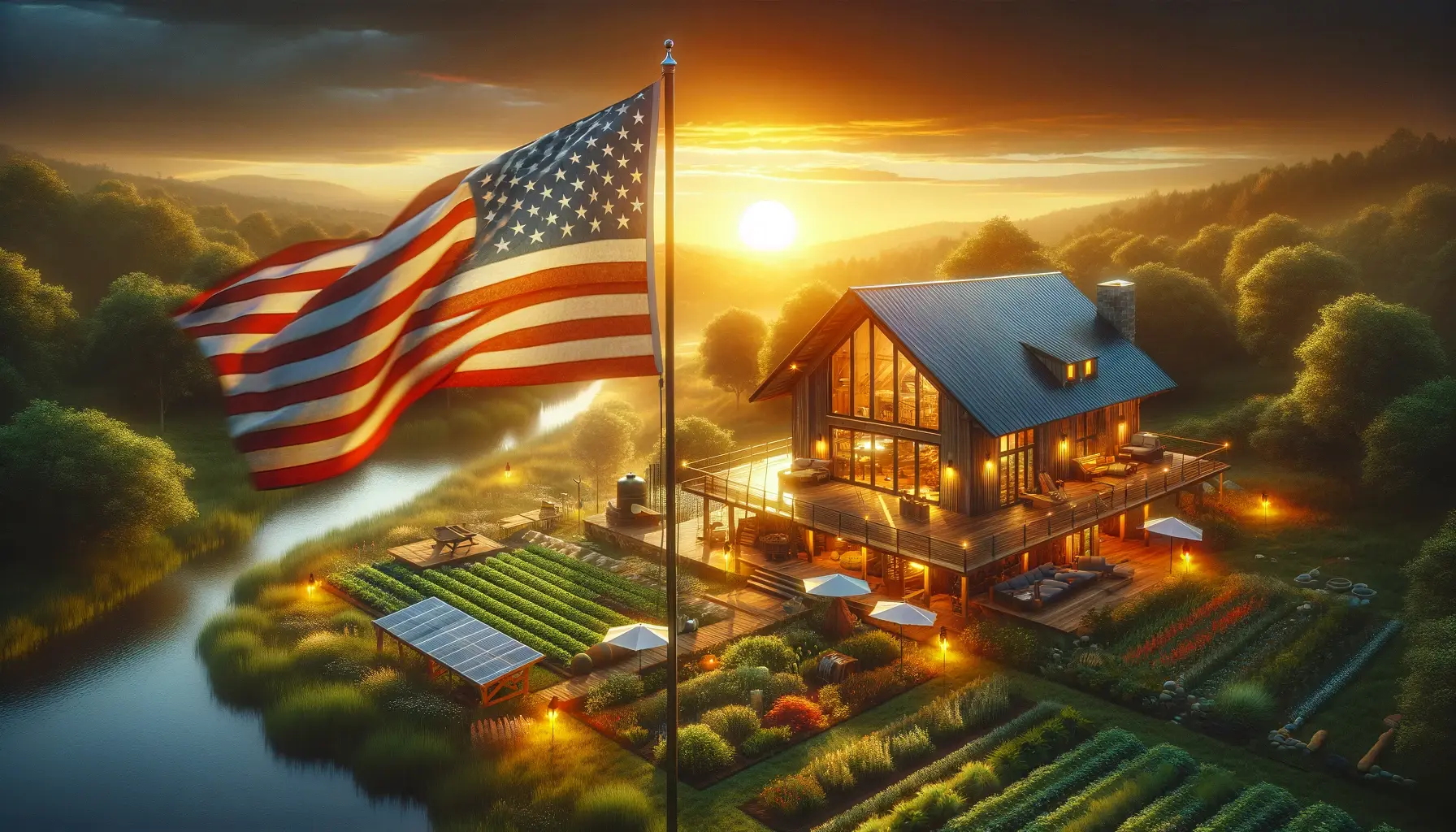
This pursuit is not merely a reaction to fear or uncertainty; rather, it is an affirmative act of preserving the American dream in its most pure and self-determined form. As you embark on or continue this journey, let the principles discussed here serve as beacons, guiding your path toward establishing a haven that can weather any storm. Whether you're motivated by a desire to return to simpler, more grounded ways of living or driven by caution in an era fraught with risk, the creation of your retreat is a powerful statement of self-empowerment. In the spirit of the American forebears, may your efforts ensure that the flame of independence and resilience burns brightly for generations to come, illuminating a path of freedom and self-sufficiency in these challenging times.
